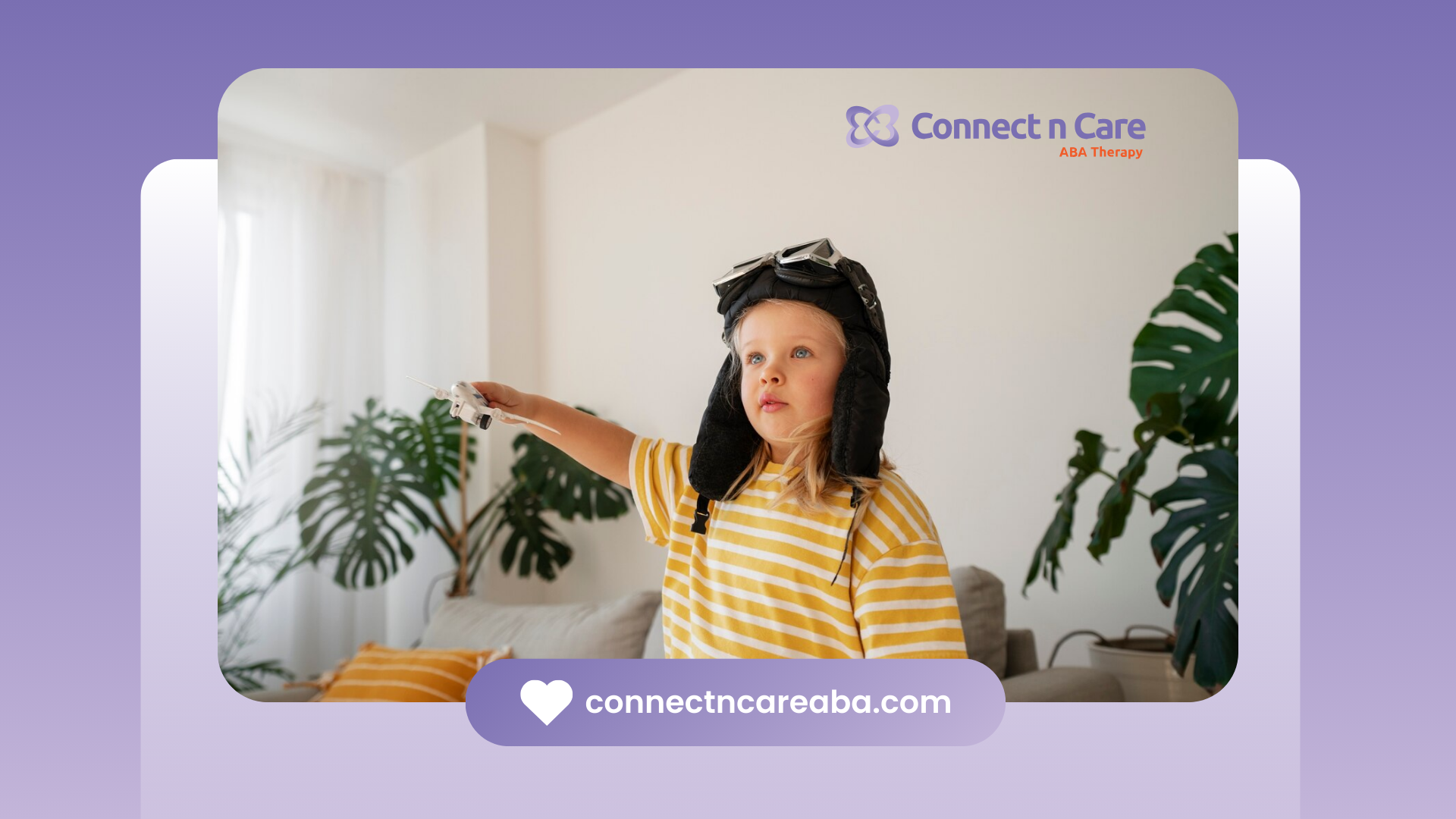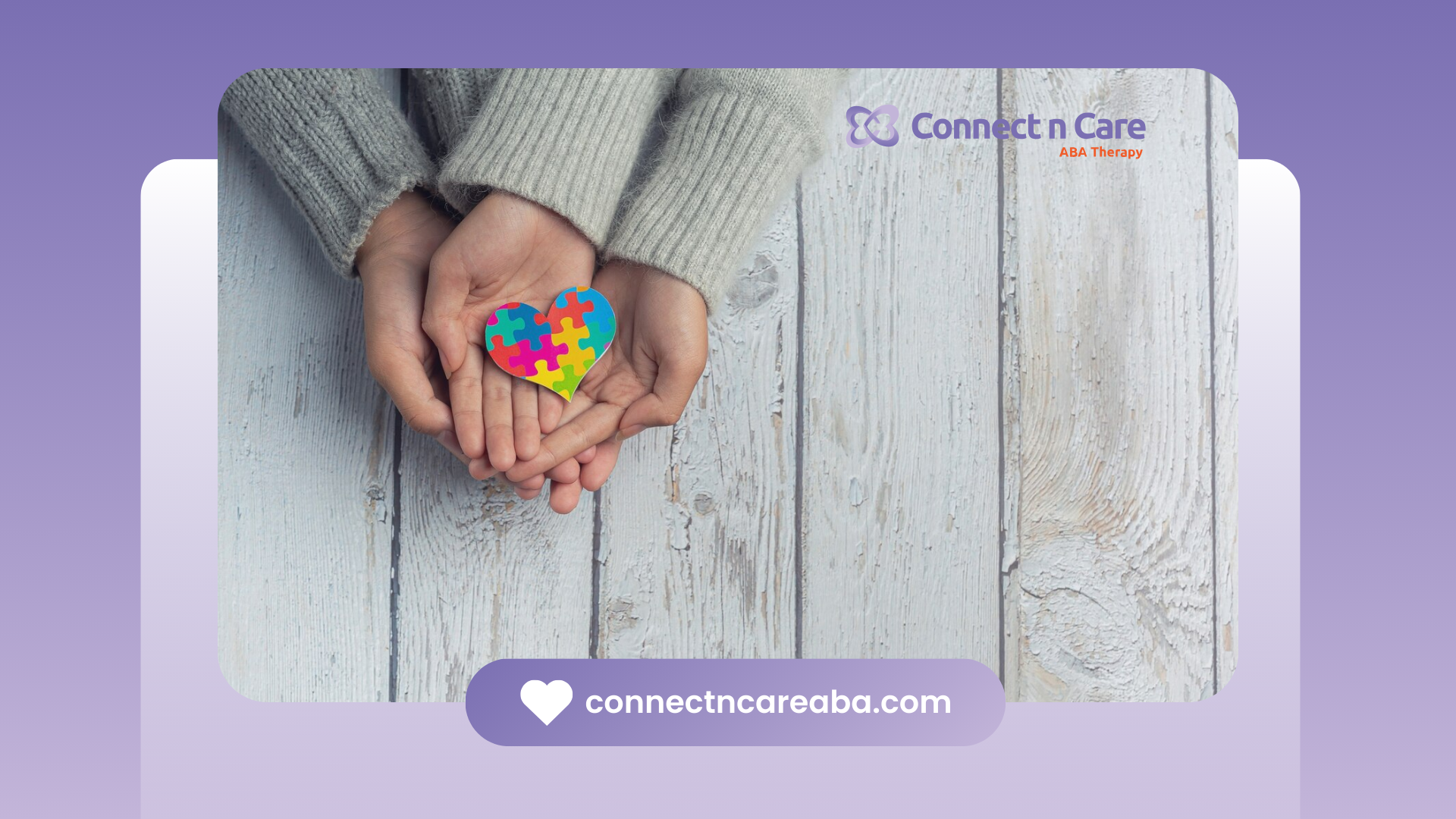Autism Spectrum Disorder (ASD) is a type of neurodevelopmental difference that shows up in various ways among different people. It's pretty complex and can affect how someone communicates socially, behaves, and processes sensory information. Because ASD covers such a broad range of symptoms and traits, it's often called a spectrum disorder. This means everyone with ASD might need different kinds of help.
For those looking after someone with autism—like parents, caregivers, or teachers—it’s really helpful to understand the spectrum nature of this condition. The Diagnostic and Statistical Manual of Mental Disorders 5th edition gives us guidelines on diagnosing ASD by looking at two main areas: how well someone can communicate socially and whether they have restricted interests or repetitive behaviors. These guidelines also tell us that while all autistic individuals could use some support, the amount they need will vary widely.
In our blog today we're diving into the three levels of autism along with what makes each level unique including their needs for support strategies. By understanding these differences better, we aim to foster an environment where everyone on the autism spectrum feels included and supported.
How Many Levels of Autism Are There?
Autism Spectrum Disorder, or ASD for short, is split into three different levels. These levels depend on how much help someone needs. To figure out which level a person falls into, experts look at how they handle talking and interacting with others and if they have any repetitive behaviors or really focused interests.
By knowing these three levels of autism spectrum disorder, people like doctors and those who take care of individuals with ASD can make sure they get the right kind of support. It's all about making sure each person has what they need to do their best in life when it comes to social communication and dealing with challenges that come from being on the autism spectrum.
Level 1 Autism: Requiring Support
People with level 1 autism need a bit of help to get through social situations and talk well with others. They might find it hard to understand hints in conversations or how to act around people, which can make making friends tough. These people often stick to certain topics they like a lot and might do the same things over and again.
Even though talking comes easily to them, now and then they may need someone's guidance on picking up on subtle social signals or working through problems during therapy sessions. With the right support tailored for them, those facing these challenges can enjoy life fully, engaging in meaningful relationships while managing their repetitive behaviors within various social settings.
Level 1 Autism Symptoms and Characteristics
People with level 1 autism show various signs that affect how they communicate and interact socially. They often find it hard to follow social rules, might not be interested in hanging out with others, and can have trouble managing their emotions or sensitivity to things around them. With a strong focus on certain topics, these individuals tend to repeat actions over and over again. Organizing tasks can be challenging for them, as they prefer sticking to the same routines without much change.
For those living with level 1 autism, needing extra help getting organized is common; changes can cause stress, and paying attention for long periods might be difficult. Therapy or coaching could really help them understand social cues better and learn ways to control their reactions more effectively.
Making some adjustments like giving them more time during exams or having occasional support from an educational assistant could make school life easier for them too. With the right kind of assistance tailored towards enhancing social skills through improved social communication, and embracing specific interests, while addressing repetitive behaviors, people with this condition have every chance of succeeding in both personal interactions and broader aspects of daily activities.
Strategies for Supporting Individuals with Level 1 Autism
Helping people with level 1 autism means finding ways to meet their special needs and tackle the challenges they face. When it comes to social situations, some helpful strategies include setting clear rules and expectations, using things like social stories or visual schedules for support, and teaching them direct social skills.
By getting into their specific interests, we can keep them interested and eager to learn. Encouraging what they love and blending it into therapy or learning activities boosts both their joy in learning and growth.
For individuals with level 1 autism, offering therapy or coaching is a good way of helping them get better at dealing with people socially, managing themselves emotionally, and picking up new social skills. In school settings too making certain changes helps a lot - like giving extra time for tests or having an education assistant help out now then supports their success in studies big time. With these kinds of support put into place individuals with level 1 autism have everything they need to do well and achieve great things.
Level 2 Autism: Requiring Substantial Support
People with level 2 autism really need a lot of help to get through daily activities. They find it harder to interact and talk with others compared to those who have level 1 autism. Starting or keeping up a conversation can be tough for them, and they might not always catch on to body language or other non-verbal ways people communicate.
Their way of acting around others can sometimes stand out as different too. Often, these individuals have hobbies or things they're into that are very specific, and they might do the same actions over and over again. But if they get the right kind of support and therapy, individuals with level 2 autism can learn better ways to connect with people around them which makes their lives better.
Identifying Autism Level 2 Symptoms and Needs
People with level 2 autism face more challenges than those with level 1. For them, picking up on things like facial expressions and other ways of communicating without words can be tough. They might not talk as much or in the same way most people do. When it comes to hanging out with others, they may act differently by not answering or just walking away mid-chat.
On top of that, these individuals often have a really strong interest in certain subjects and can get very upset if their routine is changed or something unexpected happens. It's super important to recognize these signs so we can help them better through speech therapy, occupational therapy, and learning social skills. These therapies are key for improving how they communicate and interact socially.
Intervention Techniques for Level 2 Autism
For individuals with level 2 autism, getting the right help involves a mix of different therapies and support plans tailored to their unique needs. One key approach is ABA therapy, which stands out for its role in teaching new skills and cutting down on behaviors that are not wanted. It's all about learning through doing and getting positive feedback.
When it comes to talking and understanding others, some people with level 2 autism find it tough. That's where alternative communication steps in - things like sign language or using pictures to say what words can't always express. These methods open up new ways for them to share their thoughts and join in more with others.
Having ongoing support plays a big part too. This could mean regular sessions working on specific goals, making sure they have what they need at school, or joining groups aimed at building social skills. With this kind of comprehensive backing, individuals living with level 2 autism have the chance to pick up vital life skills and see an improvement in how they experience the world around them.
Level 3 Autism: Requiring Very Substantial Support
The next levels of autism is level 3. People with level 3 autism need a lot of help because they have big trouble talking and getting along with others. They might not talk much or at all, find it hard to start chatting or play imaginatively with other kids, and usually don't show much interest in making friends. Also, they often repeat the same physical actions over and over.
When it comes to helping someone with level 3 autism, the kind of support given is pretty similar to what's offered for level 2 but cranked up a notch - more intense and happening more often. These individuals might use special tools like devices that speak for them or systems where pictures are used to communicate (AAC tools).
In school, they could get their own helper, learn in a different room from most students, and do activities that are changed so they're just right for them. With this substantial support aimed at improving how well they can communicate and interact socially; we're really looking out for boosting their overall happiness too.
Understanding the Challenges of Level 3 Autism
Level 3 autism is the toughest type of autism to deal with. It really messes with how someone can talk and interact with others, making everyday stuff hard to get through. For individuals dealing with this level, chatting might be super tough or not possible at all, which makes it hard for them to let others know what they need or think. With social cues being a big puzzle for them, it's tricky to form friendships or just get along.
On top of having a rough time talking and hanging out with people, those facing level 3 autism often do the same actions over and over again and don't like changes in their daily routine one bit. They're also extra sensitive to things around them like lights or sounds which makes just being in different places tough.
Getting why these challenges are part of life for someone living with the most severe form of autism helps us figure out better ways to support them so they can have a better shot at enjoying life despite significant impairments in communication, social interaction, and handling day-to-day tasks.
Approaches to Care for Individuals with Level 3 Autism
Looking after someone with level 3 autism is a team effort that includes healthcare professionals, family members, and other caregivers. Healthcare experts can do detailed check-ups, and offer treatments and therapies that are just right for people with level 3 autism. They're also there to help guide families and caregivers through the tough parts of dealing with level 3 autism.
For those living day-to-day life with someone who has level 3 autism, like family members and caregivers, their role is super important. They make sure the environment is supportive and organized, find ways to deal with things that might bother or upset the person because of sensory issues, and help them feel good overall. When everyone works together—healthcare workers, families, and caregivers—they can build a caring space where individuals with level 5autism can grow well-being supported in every way.
Other Types of Autism
Besides the three autism levels in the Autism Spectrum Disorder (ASD), other forms of autism used to be grouped under pervasive developmental disorders. Among these, we find Asperger's syndrome, childhood disintegrative disorder, and Rett syndrome. With Asperger's syndrome, individuals show signs of autism but still have normal language development and intelligence that is average or higher.
On another note, childhood disintegrative disorder is a less common type where kids lose previously gained skills leading to severe autism with intellectual challenges. However, Rett syndrome stands apart because it stems from a genetic mutation and isn't classified as an autism type despite some similarities.
Impact of Early Diagnosis and Intervention
Finding out early if someone has Autism Spectrum Disorder (ASD) is really important. When we know sooner, people with ASD can get the help and support they need quickly. This includes different kinds of therapy and services that can make a big difference in their lives.
Starting this help early means there's a better chance for them to grow and learn new skills, especially in talking to others, making friends, and taking care of themselves every day. It also helps families and those who take care of them understand what they're going through better so they can provide the right kind of support.
With autism spectrum disorder being such an essential focus, recognizing it early on opens doors to vital resources aimed at enhancing social interaction among other critical areas for individuals on the autism spectrum.
The Role of Early Screening in Autism
Autism Spectrum Disorder (ASD) is a brain-related condition that makes everyone experience it differently. Catching the signs early on is super important because it means doctors and specialists can step in sooner to help. When they spot these signs while kids are really young, like babies or toddlers, they can start helping them work on talking and playing well with others.
Some of the things to look out for include not looking people in the eye much, not starting to babble when most babies do, having trouble making friends or playing with other kids their age, doing the same thing over and over again, or being really sensitive about how things feel. These symptoms might be different for each kid but noticing any of them should be a reason to talk to someone who knows a lot about health.
Getting checked out early means there's a better chance for kids with ASD to get better at chatting and hanging out with others as they grow up. This kind of support from an early age helps them lead happier lives.
Doctors use something called the Diagnostic and Statistical Manual of Mental Disorders 5th edition text revision (DSM-5-TR) guidelines so they know exactly what kind of help someone needs based on their autism spectrum disorder level. Knowing this stuff also helps families find special education classes or groups where everyone understands each other better.
Effective Early Intervention Strategies
Helping people with ASD early on is super important. It's more than just figuring out about the levels of autism DSM-5, but also the ways to help them. It's all about figuring out what each person needs and helping them get better at talking, understanding others, and hanging out with friends.
There are a bunch of different ways to help, like speech therapy, occupational therapy, Applied Behavior Analysis (ABA), and learning how to be social. Each one is picked just for the person's needs and can really make a difference in how they manage day-to-day stuff.
With speech therapy, the goal is to boost communication skills. This means working on speaking clearly but also getting better at chatting with others and picking up on non-spoken hints in conversations.
Occupational therapy helps with more practical skills needed for daily life—things like dressing yourself or eating without too much trouble. Therapists also work on making it easier for individuals to handle things they feel through their senses which might bother them more than other people.
Applied Behavior Analysis (ABA) teaches new behaviors while ditching ones that aren't helpful by using rewards and careful teaching steps. It’s great for tackling tough behaviors head-on so people can learn useful skills instead.
Learning social tricks comes from training specifically aimed at improving how someone interacts socially; this includes starting talks easily or reading body language right so hanging out feels less stressful.
Focusing on these areas early in life when dealing with ASD - whether it’s about communicating effectively or feeling comfortable around others - makes navigating through various situations smoother down the line.
For ABA Therapy, you can count on Connect n Care ABA. We are dedicated to providing exceptional ABA therapy services to children with autism in North Carolina. Early intervention is crucial for optimizing outcomes, and our comprehensive approach targets the core symptoms of autism across all levels.
By understanding the specific challenges associated with each level, we develop individualized treatment plans that address communication, social skills, behavior, and daily living abilities. Our experienced therapists utilize evidence-based practices to foster independence, enhance quality of life, and empower children to reach their full potential. Through early intervention, we help children build a strong foundation for lifelong success.
Ready to unlock your child's potential? Contact Connect n Care ABA today for a personalized evaluation and discover how our expert ABA therapy can transform your family's life.
Navigating Educational and Social Services
Helping people with autism spectrum disorder (ASD) get the right education and social help is key. They need to have access to educational services that fit their needs so they can do well in school and make friends.
For those with ASD, schools might offer special programs or plans tailored just for them, known as individualized education plans (IEPs). These are designed to create a learning environment where they feel supported both academically and socially.
In school, having an extra hand from an education assistant (EA) could be super helpful, especially when it comes to making friends or understanding social cues. Sometimes, these students might need a bit of a change in how lessons are taught or maybe some more time on tests so that everything feels manageable according to their way of learning.
When we talk about helping out outside of school through social services like groups where they can practice talking and hanging out with others or community activities meant just for them—it all adds up. These kinds of support are aimed at helping individuals with ASD become more involved in their communities while also supporting their families.
Getting around the world of educational and social support isn't always easy but standing up for what someone with ASD needs is crucial. By teaming up—families along with healthcare professionals who know lots about autism spectrum disorders—and teachers working together makes sure everyone gets the backing necessary not only just to get by but truly thrive.
Conclusion
Getting to know the different levels of autism is really important for giving the right kind of help and care. With Level 1 needing some support, all the way up to Level 3 where a lot more help is needed, each stage has its own set of challenges and requirements. Catching it early and starting to help soon after can make a big difference in helping people with autism spectrum disorder have good lives.
By spotting the signs early on, using helpful approaches, and finding our way through education and social services, we're able to build welcoming spaces that encourage understanding and acceptance. Listening to what individuals with autism spectrum disorder as well as their families have to say helps us grow our understanding and compassion towards this diverse group.
Frequently Asked Questions
What Are the Early Signs of Autism in Children?
Kids show signs of autism in different ways, but there are a few common clues that might suggest they're on the autism spectrum. Catching these hints early is key because it means help can start right away. Here's what to look out for:
- Not really looking people in the eye or seeming uninterested in doing so
- Taking longer than usual to start babbling, pointing, or using other ways to communicate without words
- Having a tough time getting along with others and keeping friends
- Doing the same actions over and again like waving their hands or spinning things around
- Being extra sensitive to how things feel or sound
How Is the Level of Autism Determined?
To figure out where someone falls on the autism spectrum, doctors look at a book called the Diagnostic and Statistical Manual of Mental Disorders, 5th edition (DSM-5-TR). This book has all the rules for diagnosing autism spectrum disorder (ASD) and helps put people into groups based on how much help they need.
Doctors check two main things to decide this: how well someone can communicate and interact with others, and if they have any interests or behaviors that repeat a lot. By looking at what someone can do and what they struggle with in these areas, doctors can say how much support that person might need.
How severe their symptoms are and how much these symptoms affect everyday life also play a big role in figuring out their level of autism. The DSM-5-TR from the American Psychiatric Association spells out exactly what criteria to use for each level so healthcare professionals can make accurate calls about support needs.
Can the Level of Autism Change Over Time?
Yes, how much autism affects someone can change as time goes by. Autism spectrum disorder (ASD) is pretty complicated, but with the right help and ways to deal with it, people who have ASD can get better at things they struggle with.
The way we figure out how much autism affects someone is by using a guide called the Diagnostic and Statistical Manual of Mental Disorders, 5th edition text revision (DSM-5-TR). This guide helps us understand how well someone can communicate and interact with others and if they have any behaviors or interests that repeat a lot.
By getting help early on and having support along the way, individuals with ASD can improve their ability to talk to others, make friends, and take care of themselves. As these individuals learn new skills and find ways to handle challenges better than before; their support needs might decrease because their level of autism has changed.
Is level 2 autism high-functioning?
No, Level 2 autism is not considered high-functioning. The terms "high-functioning" and "low-functioning" autism have been largely phased out in favor of a more descriptive system that focuses on the level of support needed.
Level 1 autism is often associated with the term "high-functioning" as individuals with Level 1 autism typically require less support.
Level 2 autism indicates a need for substantial support, placing it in the middle ground between Level 1 and Level 3
Will Level 3 Autism Ever Speak?
It's important to understand that every individual with autism is unique. While Level 3 autism is associated with significant communication challenges, and many individuals with this level may not develop spoken language, it's not impossible.
What is the difference between level 1 and 2 autism?
People with Level 1 autism need some help, but those with Level 2 autism really need a lot more support because their symptoms and needs are much bigger. The main difference is how much help they require for everyday tasks and getting along with others. It's important to know these differences so we can provide the right kind of assistance.
Is ADHD a type of autism?
ADHD and autism are two different things, but sometimes they can happen together or look a bit alike because they share some signs. With ADHD, the main issues are usually paying attention and being overly active. On the other hand, autism mainly makes social interaction and talking with others hard. It's really important to get help from an expert so you can understand what's going on and find the right kind of support.









